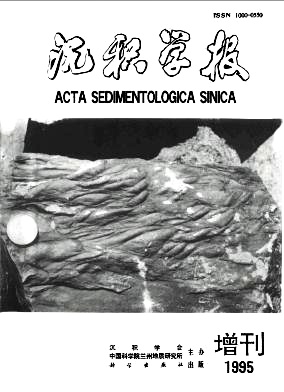The Application of Punctuated Aggradational Cycles sequences to the Analysis of the Micro-strata of the Visean Heshilafu Formation, SW Tarim Basin, NW China
- Publish Date: 1995-12-10
-
Key words:
- Heshilafu Formation /
- Punctuated Aggradational CyCles sequences (PACs) /
- micro-strataanalysis
Abstract: The study materials of this paper were collected from the Lower Carboniferous of Damusi section, Shache County, SW Tarim Basin. The hypothesis of Punctuated Aggradational CyCles sequences (Goodwin,P. W. Anderson, E. J., 1985) is applied to the analysis of the micro-strata of the Visean (Early Carboniferous) Heshilafu Formation. Five types micro-factes are also recognized from the above micro-strata.Based on the micro-factes and palaeoecological analysis, 71 PACs (Punctuated Aggradational Cycles sequence) are identified from the 2nd and 3rd Member of the Heshilafu Formation. Among them, 36 PACs recorded in the 2nd Member of the Heshilafu Formation form the Transgressive System Tracts (TST) and Highstand System Tracts (HST) of Sequence I, the other 35 PACs consist of Sequence II standing for the 3rd cycles. The above forcro-strata analysis indicates the characters of frequent high-frequency sea-level changes and cycles within cycles (Miall, A. D., 1985) in the southwestern sea of Tarim during Visean time.Those mutiple cycles can be classified to 4 orders cycles at least corresponding to 4 orders sea-level changes.The above 71 basic high-frequency cycles controlled by 11 fourth order cycles consist of two 3rd order cycles standing for sequences, which are also controlled by a 2nd order cycle standing for supersequence. Every high-frequency sea level rising corresponds to large diversity of brachiopods. The maxium flooding surface of depositional sequence corresponds to the greatest value of the diversity of brachiopods.
| Citation: | Chen Zhongqiang. The Application of Punctuated Aggradational Cycles sequences to the Analysis of the Micro-strata of the Visean Heshilafu Formation, SW Tarim Basin, NW China[J]. Acta Sedimentologica Sinica, 1995, 13(S1): 38-46. |






 DownLoad:
DownLoad: